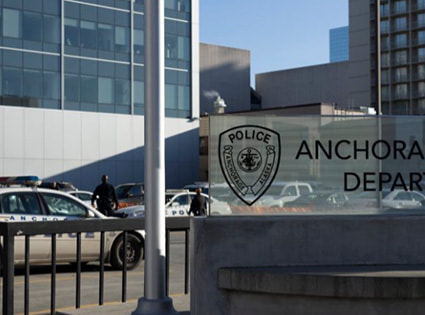APD body worn camera program remains in limbo
After a long wait, the Anchorage Police Department’s (APD) body-worn camera program seems to be taking a small step forward. On Oct. 5, the administration posted a Request For Proposal (RFP) for cameras.
However, it is not yet smooth sailing. Body cameras are only as powerful as their policy. For example, a policy can dictate whether officers have to turn the cameras on, whether the video will be made available to the public and what the penalty is if an officer turns the camera off during an interaction with the public. APD’s camera policy is currently under arbitration. The municipality has collected $1.8 million in taxes so far for a police body-camera program that was approved by voters in 2020, but they have not yet purchased the cameras. The issue now under arbitration is how the footage could be used. While the Anchorage Police Department Employees Association (APDEA) would like for the footage to be broadly available to officers to review before writing reports or making statements, the draft policy approved by Anchorage Police Chief Michael Kerle limits review in certain circumstances, such as after use-of force-events, in favor of these reports being written from memory. Law enforcement accountability groups such as the ACLU argue that allowing an officer to review footage prior to making statements about an incident can impact the officer’s memory of the event, aid them in distorting what actually happened and undermine the legitimacy of investigations. When an officer writes a report based on memory rather than video, it can better show the officer’s perception, which can have massive impacts on determining whether use of force was justified. Conversely, Police Executive Research Forum found a majority of law enforcement executives favor allowing an officer to review footage of such situations before writing a report or making statements. This arbitration process is expected to take six to nine months to complete. Meanwhile, the Alaska State Troopers are expected to have their own body camera program rolled out by next summer. The RFP is for 425 in-car cameras and 330 body-worn cameras. During a public safety committee meeting Wednesday, Kerle said several vendors expressed interest, and he is hoping to have cameras purchased and training under way while the arbitration process proceeds. He hopes to implement the program as soon as the arbitration and body-camera policy is complete. Kerle plans to phase in the program with up to 30 officers to “make sure all the bugs are worked out,” before moving to full implementation. Another controversial issue that has slowed down APD’s roll out is public access to the footage. The municipality wants to make video available only through the public records formal request process. This can limit access for people who don’t know how to use that process, which can also include exorbitant fees. Additionally, APD has a history of a long backlog for records requests, taking months if not more than a year to fulfill a request. It also allows the department to redact portions of the video. So far, the municipality has relied on the argument that state privacy laws restrict the ability to provide easy access to the video. However, the state itself intends to release use-of-force and officer-involved-shooting footage automatically, without the public having to go through the formal records request process. Anchorage Assembly member and Public Safety Committee Chair Kameron Perez Verdia noted in a conversation with The Current that there needs to be continued conversation and debate about policy, separate from the arbitration process. He would like to see an end to the delays by moving into implementation while debate continues. |
